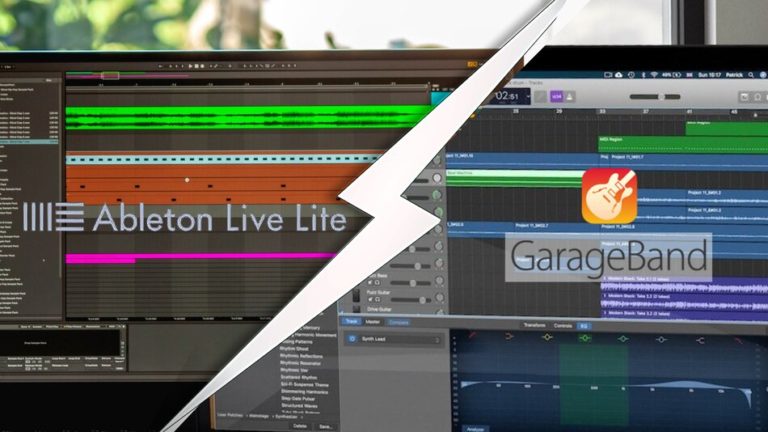

#Logic pro x vs garageband manual#
GarageBand does incorporate Logic’s Flex Time processing, which allows for time-stretching, audio quantization, and manual editing of individual note-timing-a pretty comprehensive feature set for a free DAW. For players/producers who want the sound and response of their virtual instruments to be just so, Logic is where they’ll want to be.
#Logic pro x vs garageband mod#
But in Logic, Instrument plug-in windows open to reveal full programmability, from elaborate synth controls and mod routings, to user-configurable sampled sounds (via the EXS, the little sampler that could), to the high-end sound-design and tonal-shaping capabilities of Alchemy. GarageBand uses many of Logic’s virtual Instruments under the hood when you load up patches from the Library, but for inveterate tweakers who like to customize the sounds and playability, each Instrument only provides a small set of adjustable parameters, via the associated Smart Control panels. And Logic’s reverb choices and controls go way beyond what GB provides, just to name a few of the most common processing tools.

The same is true with EQ-both GB and Logic offer the standard Channel EQ, but Logic also has a collection of Vintage EQ models, providing more analog “character”. A perfect example is the Compressor-GarageBand’s Compressor offers basic compression controls, but Logic’s version includes not only much more comprehensive options but multiple emulations of classic analog hardware compressors, each with its own distinct sound and response. And for some plug-ins, the feature set is greatly reduced/simplified in the GB version-open up the Logic version and you’ll find many more control and options. GarageBand has many of the same plug-ins that are found in Logic, but Logic has plenty to add. But parallel processing can also be used for other effects-parallel compression is a popular technique, and extra Aux tracks can add flexibility to that application. There can be any number of send & return effects for parallel processing like reverb, and given the widespread practice of having multiple reverbs in a mix, applied selectively to different tracks, this will be a welcome addition for GB users who are beginning to get more adventurous in their mixes. Routing certain tracks through an Aux allows for subgrouping (like all drum mics, all background vocals, etc), a standard technique for organizing a mix and processing a group of related tracks as a unit. Logic, of course, offers a standard Mixer display, with traditional Channel Strips, user-configurable routings and Aux channels, mix groups and VCA faders, and all the mixing options you’d expect from a top-of-the-line DAW.Īs I mentioned in the previous paragraph, in Logic Aux channel strips can be added and configured for a variety of purposes over and above the simple reverb and echo send & return options in GB. Now of course you can mix in GarageBand, but the various components of a standard mixer are spread around-fader and pan in the track headers, plug-in access in the Smart Controls pane at the bottom (where you can only view/access one track at a a time), and only a couple of fixed send & return effect paths. Probably the most obvious difference is the inclusion of a proper Mixer in Logic. So what do you get for your $200? Well there are many, many additional capabilities in Logic, but here are just a few of the most significant differences/additions. However, for a lot of intrepid musicians and producers there’ll come a time when they bump up against GB’s limits enough times to be ready to step up to its big brother, Logic-since GB Projects can be opened up directly in Logic with all elements intact, it’s kind of a no-brainer.ĭespite the fact that GB really is Logic under the hood, with a simplified interface and pared-down feature set, there are a lot of cool features that Logic has to offer GB users who are ready to take the plunge. GarageBand is no doubt the main entry point into the DAW world for many users of Macs and Apple devices, and it’s a surprisingly capable application, despite its simple appearance.


 0 kommentar(er)
0 kommentar(er)
